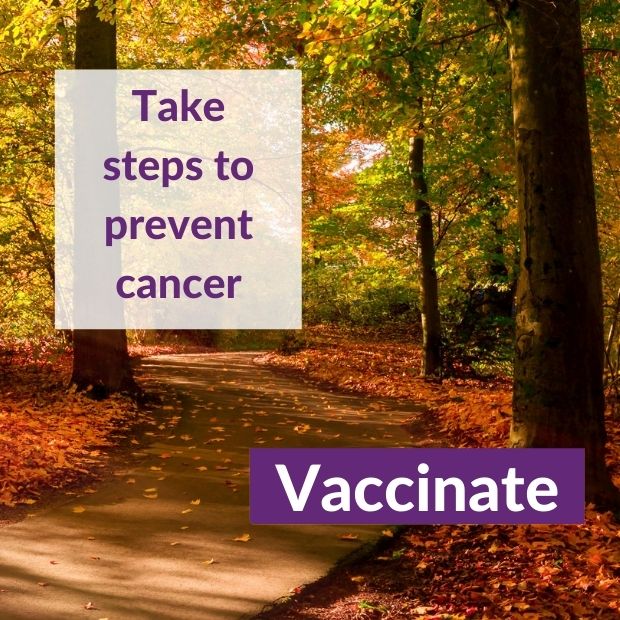Hepatitis Vaccine Guidelines
Health Care
The League of Extraordinary Providers
Harm Reduction
Elimination Tools
Hepatitis Treatment Guidelines
Additional Resources
Oregon Viral Hepatitis Collective
The Oregon Viral Hepatitis Annual Meeting 2024


 The CDC updated the adult hepatitis B vaccination recommendations! On Monday, May 23, 2-3:30pm EST the Office of Infectious Disease and HIV/AIDS Policy (OIDP) will host a webinar on the federal implementation of these new guidelines. As part of the Viral Hepatitis National Strategic Plan, federal partners are working together to increase hepatitis B vaccination uptake in the United States. OIDP will be joined by a panel of federal leadership from across HHS to discuss how each agency plans to employ the new recommendations and encourage vaccination uptake.
The CDC updated the adult hepatitis B vaccination recommendations! On Monday, May 23, 2-3:30pm EST the Office of Infectious Disease and HIV/AIDS Policy (OIDP) will host a webinar on the federal implementation of these new guidelines. As part of the Viral Hepatitis National Strategic Plan, federal partners are working together to increase hepatitis B vaccination uptake in the United States. OIDP will be joined by a panel of federal leadership from across HHS to discuss how each agency plans to employ the new recommendations and encourage vaccination uptake.

On March 31, the U.S. Centers for Disease Control and Prevention published the updated hepatitis B vaccination recommendations that all adults aged 19 through 59 years receive the hepatitis B vaccine. Adults aged 60 years and older with known risk factors for hepatitis B may also receive the hepatitis B vaccine. CDC continues to recommend hepatitis B vaccination for all infants and unvaccinated children under the age of 19 years. Fully implementing existing and new recommendations can reduce the burden of hepatitis B, while also moving toward elimination of the virus in the United States.
See the new recommendations below!
Hepatitis A
CDC Recommendation for Hepatitis A vaccination
Routine vaccination
- Not at risk but want protection from hepatitis A
(identification of risk factor not required): 2-dose series HepA (Havrix 6–12 months apart or Vaqta 6–18 months apart [minimum interval: 6 months]) or 3-dose series HepA-HepB (Twinrix at 0, 1, 6 months [minimum intervals: dose 1 to dose 2: 4 weeks / dose 2 to dose 3: 5 months])
Special situations
- At risk for hepatitis A virus infection: 2-dose series HepA or 3-dose series HepA-HepB as above
- Chronic liver disease (e.g., persons with hepatitis B, hepatitis C, cirrhosis, fatty liver disease, alcoholic liver disease, autoimmune hepatitis, alanine aminotransferase [ALT] or aspartate aminotransferase [AST] level greater than twice the upper limit of normal)
- HIV infection
- Men who have sex with men
- Injection or noninjection drug use
- Persons experiencing homelessness
- Work with hepatitis A virus in research laboratory or with nonhuman primates with hepatitis A virus infection
- Travel in countries with high or intermediate endemic hepatitis A (HepA-HepB [Twinrix] may be administered on an accelerated schedule of 3 doses at 0, 7, and 21–30 days, followed by a booster dose at 12 months)
- Close, personal contact with international adoptee (e.g., household or regular babysitting) in first 60 days after arrival from country with high or intermediate endemic hepatitis A (administer dose 1 as soon as adoption is planned, at least 2 weeks before adoptee’s arrival)
- Pregnancy if at risk for infection or severe outcome from infection during pregnancy
- Settings for exposure, including health care settings targeting services to injection or noninjection drug users or group homes and nonresidential day care facilities for developmentally disabled persons (individual risk factor screening not required)
Source: https://www.cdc.gov/vaccines/schedules/hcp/imz/adult.html#note-hepa
Hepatitis B
CDC Recommendations – New March 31, 2022
Adults recommended to receive Hep B vaccine:
The Advisory Committee on Immunization Practices (ACIP) recommends that the following people should receive hepatitis B vaccination:
- All infants
- Unvaccinated children aged <19 years
- Adults aged 19 through 59 years
- Adults aged 60 years and older with risk factors for hepatitis B
The following groups may receive hepatitis B vaccination:
- Adults aged 60 years and older without known risk factors for hepatitis B
Risk factors for hepatitis B
-
- Persons at risk for infection by sexual exposure
- Sex partners of persons who test positive for hepatitis B surface antigen (HBsAg)
- Sexually active persons who are not in a long-term, mutually monogamous relationship (e.g., persons with more than one sex partner during the previous 6 months)
- Persons seeking evaluation or treatment for a sexually transmitted infection
- Men who have sex with men
- Persons at risk for infection by percutaneous or mucosal exposure to blood
- Persons with current or recent injection use
- Household contacts of persons who test positive for HBsAg
- Residents and staff of facilities for persons with developmental disabilities
- Health care and public safety personnel with reasonably anticipated risk for exposure to blood or blood-contaminated body fluids
- Persons on maintenance dialysis, including in-center or home hemodialysis and peritoneal dialysis, and persons who are predialysis
- Persons with diabetes at the discretion of the treating clinician
- Persons at risk for infection by sexual exposure
Others
-
-
- International travelers to countries with high or intermediate levels of endemic hepatitis B virus (HBV) infection (HBsAg prevalence of ≥2%)
- Persons with hepatitis C virus infection
- Persons with chronic liver disease (including, but not limited to, persons with cirrhosis, fatty liver disease, alcoholic liver disease, autoimmune hepatitis, or an alanine aminotransferase [ALT] or aspartate aminotransferase [AST] level greater than twice the upper limit of normal)
- Persons with HIV infection
- Incarcerated persons
Implementation Guidelines
To ensure vaccination of persons at risk for HBV infection, health care providers should:
-
- Offer HepB vaccination to all adults aged 19–59 years who have not previously completed vaccination, as well as adults > 60 years with risk factors for hepatitis B or without identified risk factors but seeking protection.
- Implement standing orders to administer HepB vaccine as part of routine services to adults who have not completed the vaccine series.
- Offer HepB vaccination, when feasible, in outreach and other settings in which services are provided to persons at risk for HBV infection (e.g., syringe services programs, HIV testing sites, HIV prevention programs, homeless shelters).
-
Recommended doses of currently licensed formulations of hepatitis B vaccine, by age group and vaccine type
| Hepatitis B Vaccine*, Age Group (yrs) | Dose (µg) | Vol (mL) | Schedule |
| Recombivax HB | |||
| Infants (<1 yr) | 5 | 0.5 | 3-doses at age 0, 1–2, 6–18 mos |
| Children (1–10 yrs) | 5 | 0.5 | 3 doses at 0, 1–2, 6 mos |
| Adolescents (11–19 yrs) † | 5 | 0.5 |
3 doses at 0, 1, 6 mos†
|
| Adults (≥20 yrs) | 10 | 1 | |
| Patients on hemodialysis and other immune-compromised persons, <20 yrs§ | 5 | 0.5 | |
| Patients on hemodialysis and other immune-compromised persons, ≥20 yrs | 40 | 1 | |
| Engerix-B | |||
| Infants (<1 yr) | 10 | 0.5 | 3-doses at age 0, 1–2, 6–18 mos |
| Children (1–10 yrs) | 10 | 0.5 | 3 doses at 0, 1–2, 6 mos |
| Adolescents (11–19yrs) | 10 | 0.5 | 3 doses at 0, 1, 6 mos |
| Adults (≥20 yrs) | 20 | 1 | |
| Patients on hemodialysis and other immune-compromised persons, <20 yrs§ | 10 | 0.5 | |
| Patients on hemodialysis and other immune-compromised persons, ≥20 yrs | 40 | 2 | 4 doses at 0, 1, 2, 6 mos ¶ |
| Heplisav-B | |||
| Adults (≥18 yrs**) | 20 | 0.5 | 2 doses at 0 and 1 mos |
| PreHevbrio (FDA-approved in 2021) | |||
| Adults (≥18 yrs**) | 10 | 1 | 3 doses at 0, 1, 6 mos |
| Pediarix (combination hepatitis B, diphtheria, tetanus, acellular pertussis, and inactivated poliovirus) | |||
| Infants (<1 yr) | 10 | 0.5 | 3-doses at age 0, 1–2, 6–18 mos |
| Children (1–6 yrs) †† | 10 | 0.5 | 3 doses at 0, 1–2, 6 mos |
| Vaxelis (combination diphtheria, tetanus, acellular pertussis, inactivated poliovirus, Haemophilus influenzae type b, and hepatitis B) | |||
| Infants (<1 yr) | 10 | 0.5 | 3 doses at age 0, 1–2, 6–18 mos |
| Children (1–4 yrs) §§ | 10 | 0.5 | 3 doses at 0, 1–2, 6 mos |
| Twinrix (combination hepatitis A-hepatitis B) ¶¶ | |||
| Adults (≥18 yrs) | 20 | 1 |
3 doses at 0, 1, 6 mos (standard) or 4 doses at 0, 7d, 21–30 d, 12 mos (accelerated) |
* Refer to package inserts for further information. For all ages, when the hepatitis B vaccine schedule is interrupted, the vaccine series does not need to be restarted. If a 3-dose series is interrupted after the first dose, the second dose should be administered as soon as possible, and the second and third doses should be separated by an interval of at least 8 weeks. If only the third dose has been delayed, it should be administered as soon as possible. The final dose of a 3-dose series vaccine must be administered at least 8 weeks after the second dose and should follow the first dose by at least 16 weeks; the minimum interval between the first and second doses is 4 weeks. Inadequate doses of hepatitis B vaccine or doses received after a shorter-than-recommended dosing interval should be readministered, using the correct dosage or schedule. Vaccine doses administered ≤4 days before the minimum interval or age are considered valid. Because of the unique accelerated schedule for Twinrix, the 4-day guideline does not apply to the first three doses of this vaccine when administered on a 0-day, 7-day, 21–30-day, and 12-month schedule. PreHevbrio is a three-antigen HepB vaccine that was FDA approved in 2021.
† A 2-dose schedule of Recombivax HB adult formulation (10 µg) is licensed for adolescents aged 11 through 15 years. When scheduled to receive the second dose, adolescents aged 16 years or older should be switched to a 3-dose series, with doses 2 and 3 consisting of the pediatric formulation administered on an appropriate schedule.
§ Higher doses might be more immunogenic, but no specific recommendations have been made.
¶ Engerix-B for adults on hemodialysis: Administer series of 4 doses (2 mL each) as a single 2-mL dose or as two 1-mL doses on a 0-, 1-, 2-, 6-month schedule. Recombivax HB for adults on hemodialysis is a 3-dose series.
** Data on Heplisav-B and PreHevbrio are currently insufficient to inform vaccine-associated risks in pregnancy. Thus, providers should vaccinate pregnant people needing HepB vaccination with Engerix-B, Recombivax HB, or Twinrix.
†† Pediarix cannot be administered at birth, before age 6 weeks, or at age ≥7 years.
§§ Vaxelis is approved for use as a 3-dose series in children 6 weeks through 4 years of age.
¶¶Twinrix is recommended for people aged ≥18 years who are at increased risk for both HAV and HBV infections.
Hepatitis C
There is NO VACCINE for hepatitis C. All people living with or at risk for hepatitis C should be vaccinated against hepatitis A and hepatitis B.
